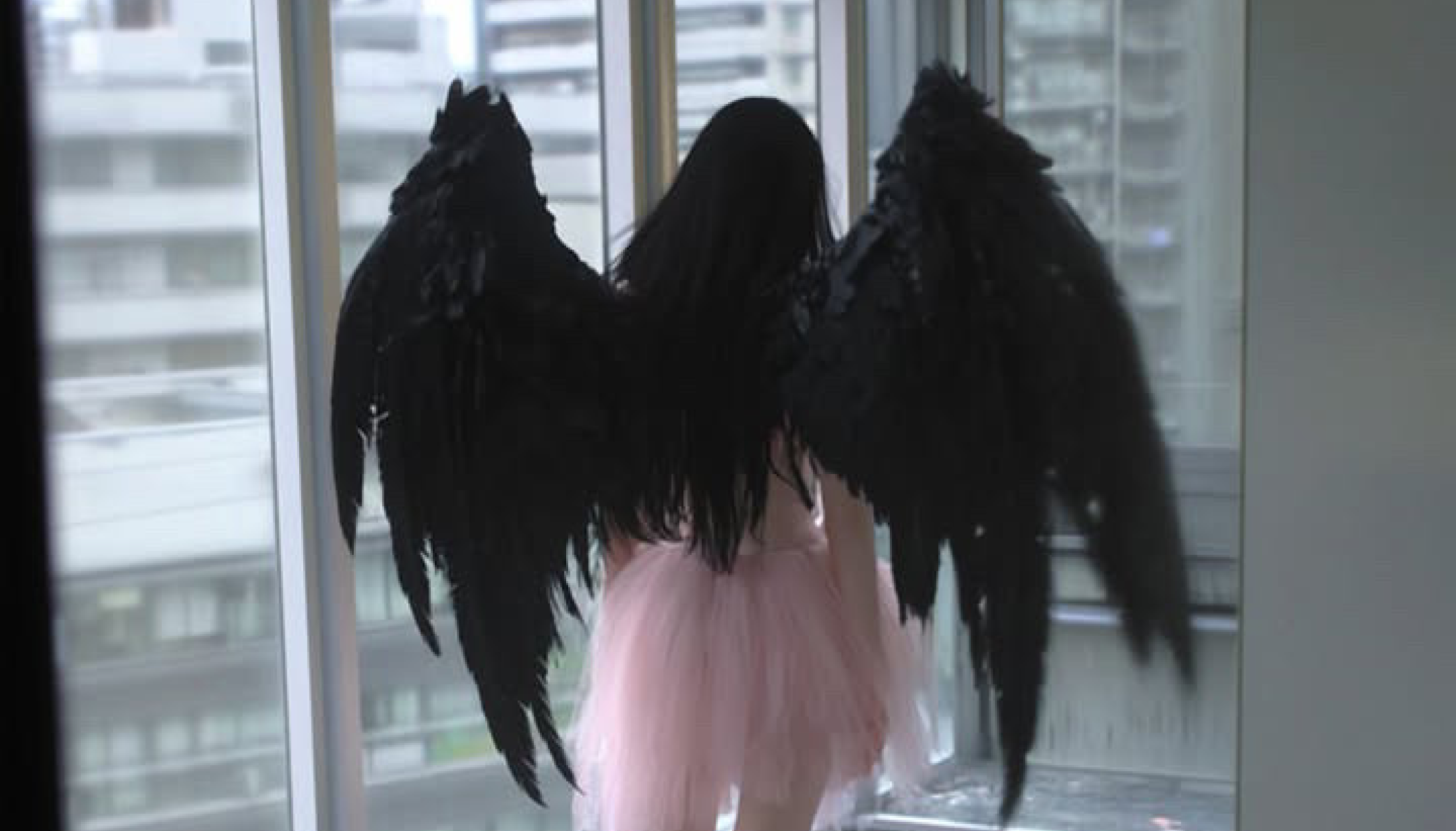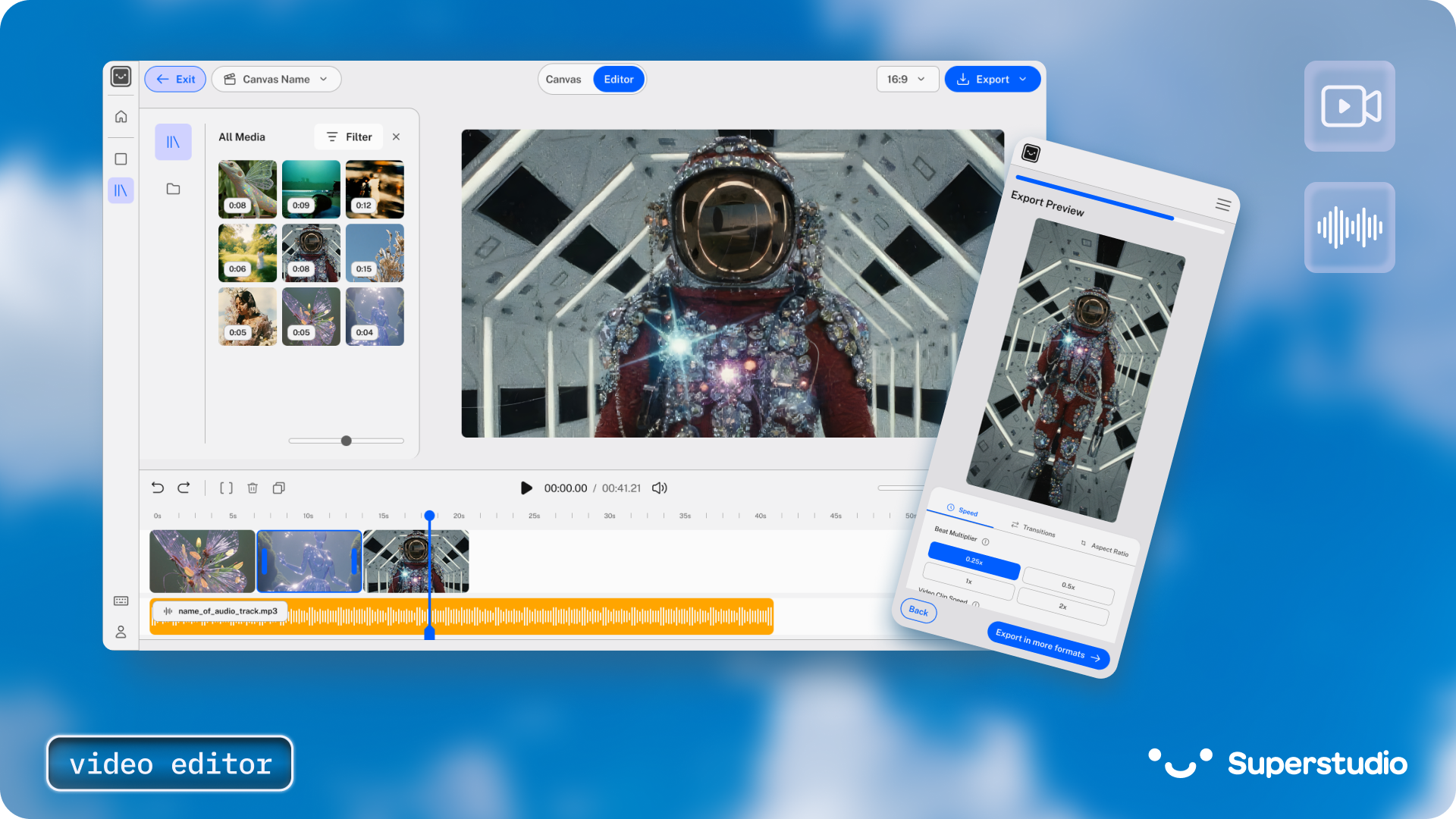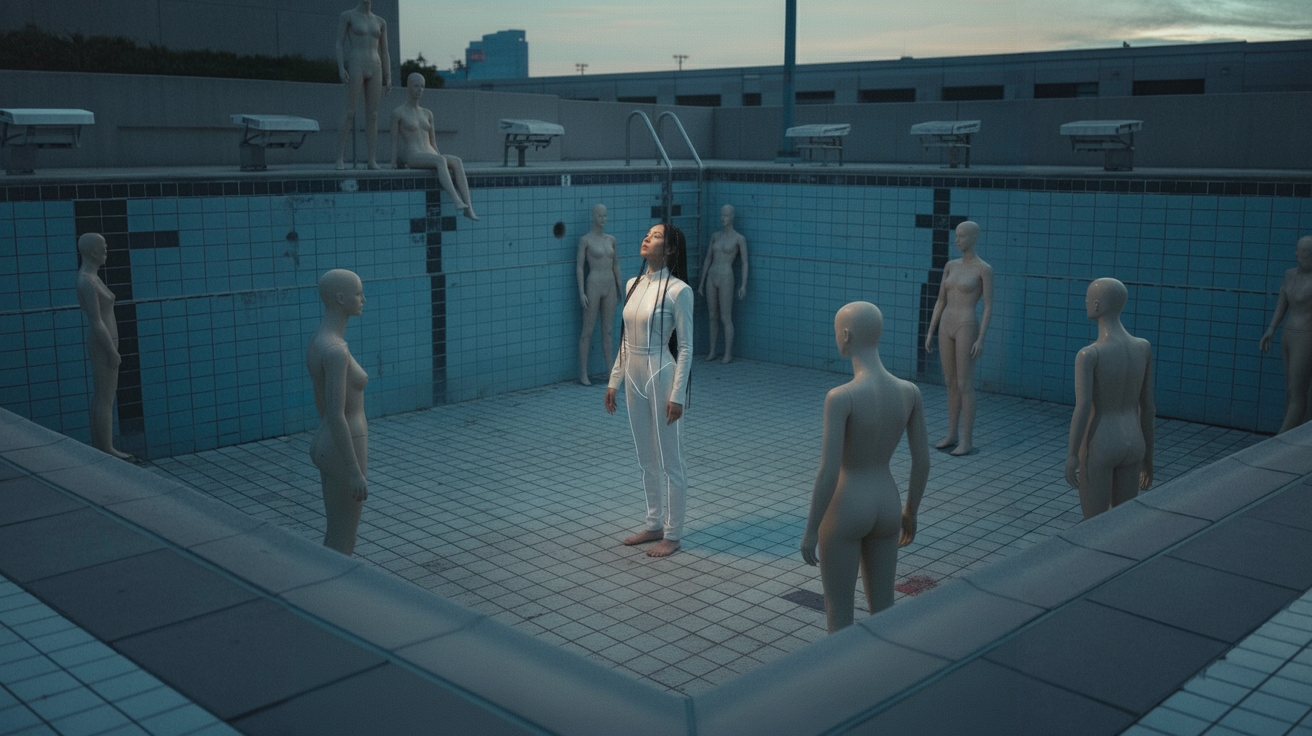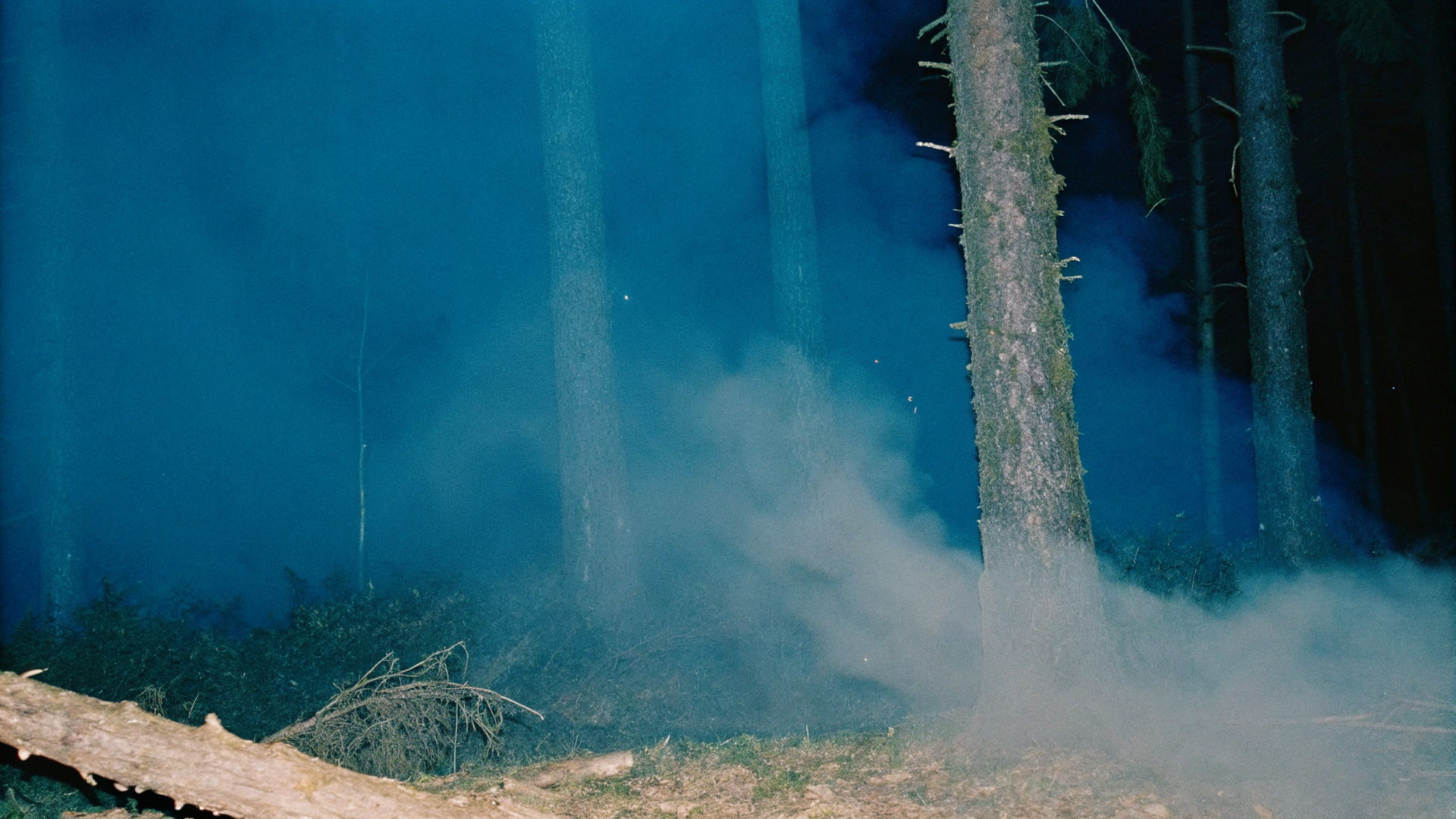Sukeee is a Seoul-based artist and creative director who has built a recognizable visual language defined by clarity, emotion, and digital softness. Her works often feature glowing figures, broken glass, radiant light, and a sense of calm surrealism—like screenshots from a dream that’s been processed through the machine. Over time, these symbols have become central to her visual identity, evoking both a somber sweetness and a quiet sense of drama.
While the artist embraces new tools like AI, her approach is anything but automated. Whether crafting angelic bodies or fine-tuning light reflections, she remains hands-on and intentional; she guides the tech rather than letting it take over. For her, digital creation is about holding onto feeling, even within a generative workflow, and it’s certainly not about chasing perfection.
In this conversation with writer and curator Benoit Palop, Sukeee discusses her first piece made in Superstudio, her thoughts on preserving emotional weight in synthetic imagery, and how she’s learning to evolve her language without losing what makes it hers.
Your recent artworks often drift between the spiritual and the synthetic, like dreams rendered through an algorithm and CGI textures. With this first work made in Superstudio, what kind of emotional or visual atmosphere were you hoping to create?
I always aim to capture something that’s both everyday and just beyond reality—something fantastical. That’s exactly why I work with AI. In this Superstudio piece, I wanted to turn that universal feeling (the urge to drop everything at work and just fly home) into a dreamlike visual. I mean, who hasn’t wanted to smash a window, spread their wings, and soar back home? 😄
“I always aim to capture something that’s both everyday and just beyond reality—something fantastical. That’s exactly why I work with AI. ”
Symbols such as angels, radiant bodies, and soft glows have become part of your signature universe. How did these elements respond (or push back) when shaped through this new generative workflow?
I love anything that sparkles. Using Superstudio, I brought that element to life by depicting broken glass shards as shimmering highlights. It was incredibly useful to get the exact look I wanted with just a simple prompt, and I loved being able to compare different rendering tools right inside Superstudio to pick the best result.

What is the experience of creating with AI like for you? Does it feel fluid, like reaching into a new kind of brush stroke—or did it shift your usual tempo and way of building images?
In the past, I spent time tweaking prompts to find my own style. The freedom felt overwhelming at first, like too many possibilities made it hard to know what was truly “mine.” These days I’ve nailed down my aesthetic, and my workflow is much faster. Of course, like any skill, you improve with practice, AI or not, so now I’m focused on how to push for even more beautiful and attention-grabbing results within that efficient process.
“In the past, I spent time tweaking prompts to find my own style. The freedom felt overwhelming at first, like too many possibilities made it hard to know what was truly ‘mine.’ These days I’ve nailed down my aesthetic.”
Your practice often carries a subtle emotional charge—even in its most digital, constructed forms. Was there a moment where you had to consciously adapt your process to preserve that sense of closeness?
What matters most to me is the coexistence of beauty and its darker counterpart. AI can generate flawless imagery, but I believe people feel a disconnect when something is too perfect. That’s why I deliberately introduce imperfections, like dunking a person in water or shattering glass, instead of chasing perfect resolution. This keeps the work human and emotionally resonant.

“AI can generate flawless imagery, but I believe people feel a disconnect when something is too perfect. That’s why I deliberately introduce imperfections.”
Generative tools bring their own logic. In working with Superstudio, did it feel more like a dialogue with an intelligent system—or more like guiding it toward your vision? And do you see AI tools like this supporting both your personal and commissioned work?
Working with Superstudio felt astonishingly easy. Rather than negotiating with the AI, it delivered exactly what I asked for in the simplest, cleanest form—I was very much “bending the machine to my own voice.” Since I had a clear vision from the start, Superstudio simply executed it without struggle.
I think it works beautifully for both personal and commissioned projects. As long as the creator has a strong vision and stays decisive, the tool can effortlessly generate the desired outcome.

A lot of people assume working with AI is fast or effortless. What’s something you wish more people understood about the labor or decisions behind this kind of work?
I studied design and have done countless personal projects and commissions. From my experience, AI may be fast, but it’s by no means effortless. If you have a specific mood or image in mind, achieving it often requires repeated manual tweaks—almost like traditional craftsmanship. And because AI edits aren’t always localized, you might have to regenerate entire scenes to change a small detail. I wish more people understood that nuance before assuming AI is just a one-click magic button. Because that’s not how it works.
“To avoid boring repetition, I’ve experimented by making only small, strategic variations. Now I’m ready to expand that territory—continually pushing boundaries with
each new attempt. ”
As you continue experimenting with this medium, how do you think about evolving your visual language? Are there strategies you use to avoid stagnation or to push against the defaults of the system to keep your work feeling alive?
I’ve worked hard to define my own style, but I still feel there’s so much more to explore. To avoid boring repetition, I’ve experimented by making only small, strategic variations. Now I’m ready to expand that territory—continually pushing boundaries with each new attempt. Ultimately, I want to leave my mark across fashion, entertainment, and commercial advertising with work that unmistakably feels like me.



